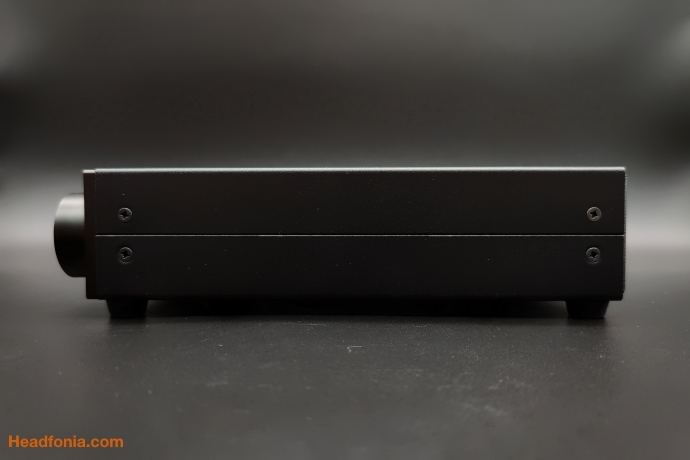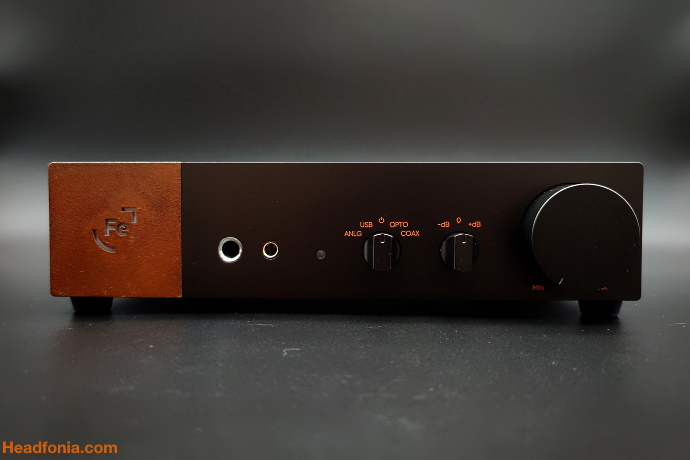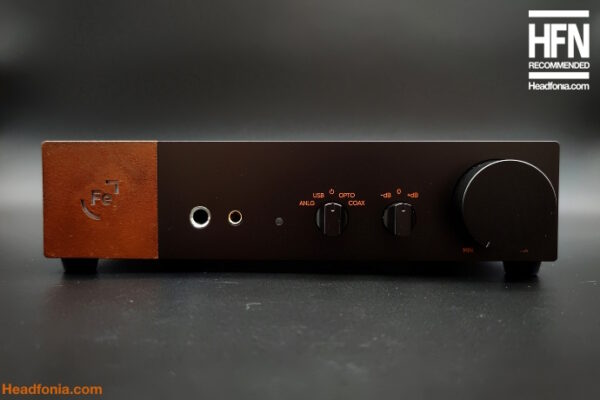In this review we take a close look at the Ferrum Audio ERCO DAC/AMP, selling for $ / € 2,395 USD / Euro.
Disclaimer: Ferrum Audio is not related to Headfonia in any way. The Ferrum ERCO were sent to me to be featured on Headfonia.com.
HEM / Ferrum Audio
Founded more than 20 years ago in Warsaw, Poland by Marcin Hamerla, HEM set out to operate at the forefront of audio technology. Having done several projects for the Polish government, HEM’s focus shifted to industry leading digital technology in collaborating with Mytek Digital. Experimenting with hi-res audio and Master Quality Authenticated files in particular, HEM manufactured the finest Digital to Analogue converters in the world under the Mytek brand. Apart from being responsible for manufacturing Mytek, HEM distributed the brand in European and Far Eastern markets. Another brand in HEM distribution is Clarus Cable. HEM recently introduced a new and completely in-house developed brand of hifi products under the name Ferrum, which HEM will be distributing as well. Because of HEM’s in-house Research & Development and Software Programming Division, fields of expertise also include the manufacturing of original electronic equipment (OEM) and electronic designs (ODM).
The Ferrum brand was created in early 2020 and set out to combine sustainability, durability and quality into compact yet attractive packages, focused on one thing only: delivering the best possible audio experience at an affordable price level. The first product was the Hypsos PSU (Power Supply Unit) and the second Ferrum product is a headphone amplifier called, OOR, which we reviewed a few months ago.
Ferrum very quickly is building a name in our personal audio segment, certainly now that the shows are back being hosted and more people get to listen to their excellent Hypsos/OOR setup. In this new article we will be looking at their latest unit, the Ferrum ERCO (pronounced Ertso) which is an all-in-one DAC & headphone amplifier.
ERCO
The Ferrum ERCO is a DAC and headphone amplifier but it also features balanced XLR and unbalanced RCA line outputs. It’s selling for $/€ 2.395 USD/Euro which puts it directly in the upper part of the market.
You can find out all about the Ferrum ERCO on its dedicated web page here: https://ferrum.audio/erco/
The name ERCO (not pronounced airco but ˈert͡so) is Esperanto for ore. We took to Esperanto for the name inspired by its creator Ludwik Lejzer Zamenhof, who used to live around the corner from our offices near Warsaw. Zamenhof started developing Esperanto in his childhood while still in school, pursuing peace around the world where one language would bring together humankind. We want to do the same through pure and honest music reproduction. In the end it brings peace to the mind.
Input-wise you get three digital inputs (USB-C, Coax, Optical) and one analog RCA input in case you want to bypass the ERCO’s DAC part. Headphone-wise the ERCO features a balanced 4,4mm jack and an unbalanced 6,35mm jack on the front.
Size-wise the ERCO is identical to the Hypsos and OOR and it measures 21.7 cm x 20.6 cm x 5 cm / 8.6” x 8.1” x 2.0” in W x D x H. With its 1.8 kg / 3.97 LBS it stands firm on your desk or on top of the Hypsos, and it doesn’t budge when connecting cables or plugging in/out headphones.
DAC-wise the ERCO features an ESS Sabre ES9028PRO chip with allows PCM up to 384k@32bit and DSD up to 256 (11.2 MHz / 12.2 MHz). For the full sample rate overview, check out the technical specs below. The ERCO does render MQA for those who believe in and like to listen to the format.
The ERCO sports ultra-wideband ICs and according to Ferrum they’re fine tuned for audio use to achieve the best possible analog quality. All digital ports are optimised for audio, MQA decoding and rendering is optimised for use with internal ARM chip. The signal path in this device is truly balanced.
ERCO comes with a carefully selected DC power adapter which works fine but the ERCO is made to excel when powered by Ferrum’s Hypsos PSU, using their proprietary Ferrum Power Link (FPL in short) to connect the two. HYPSOS – according to Ferrum – then will perform to its maximum, unleashing unheard musicality from the combination with ERCO. The Hypsos and FPL cable have to be ordered separately, but I have to admit that the Ferrum PSU really boosts the OOR’s and ERCO’s performance. It doesn’t stop their though, as you can easily use Hypsos with many other units. I have been using it with my Burson units in example, and I am very pleased with the result. Anyway, if you have the extra budget, go for the Hypsos to get the very best out of the it. But if you don’t there’s nothing to worry about, as ERCO will still sound very good.
Asio drivers for use with Windows operating systems can be found here: https://ferrum.audio/support/

Design, Build quality
The Ferrum ERCO is designed and built in Poland. It comes in the typical Ferrum box in which it fits perfectly. With the cut-out foam the unit is perfectly protected for transport. Together with the ERCO you receive a Quick Setup Guid, a standard PSU and a USB cable to hook the DAC up to your source. A basic bust complete package, presented in a nice way.
For ERCO, Ferrum uses Corten steel in combination with an anodized aluminium front. Design-wise the ERCO complements the Ferrum OOR and Hypsos and it’s a pretty / classy looking DAC/AMP unit if you ask me. It’s a nice double or even triple stack to look at, as you can see in the pictures. The left side with the brownish metal and Ferrum logo (LED included) already is iconic.
The build quality of the ERCO is top notch. We also saw that on the OOR/Hypsos and it’s the kind of quality you expect from a high-end device at this price level.
Lay-out
Even with all its in- and outputs, the Ferrum ERCO is a simple unit to use.
On the front you from left to right have:
- the Ferrum logo which lights up when the unit is powered on
- the 4.4mm balanced headphone output
- the 6.35mm single ended output
- LED indicator
- the power switch and source selector (Analog, USB, Power on/off, Optical, Coax)
- the gain selector
- the volume dial
The LED indicator (Fig.1D) on the front panel will change its color depending on the selected input or the incoming data stream.
- Green, Blue & Magenta – MQA The LED glows green to indicate that the unit is decoding and playing an MQA stream or file, and denotes provenance to ensure that the sound is identical to that of the source material. It glows blue to indicate it is playing an MQA Studio file, which has either been approved in the studio by the artist/producer or has been verified by the copyright owner. It glows magenta when ERCO is receiving MQA signal which is unfolded by some upstream decoder or software where the media source is initially handled. Note: For proper MQA decoding make sure your source can provide bit perfect signal to the ERCO. All digital inputs will accept MQA signal.
- Orange – PCM The LED will glow orange when any PCM data stream is detected.
- White – DSD The LED will glow white when DSD or DoP data stream is detected.
- Yellow – Analogue input The LED will glow yellow when analogue input is selected. There is no analogue signal detection so LED will glow as long as analogue input is selected.
- Flashing white – Firmware loader mode The LED will blink white when ERCO is in firmware loader mode.
- Red – Error / Fault The LED will glow red when there is some kind of firmware/software error.
The back of the unit is busier and you here from left to right will find:
- the XLR analog outputs
- the RCA outputs
- the RCA inputs
- the optical input
- the coaxial input
- the USB-C input
- the Bypass rotary switch – allows you to bypass ERCO’s internal volume potentiometer. This option is useful when you control volume at the source.
- the front LED brightness selector
- trigger (the trigger output wakes up the external device. You can use this option to wake up an external device, such as an amplifier, by turning on the ERCO. To use trigger output you have to use 3.5 mm, 2-pole jack cable)
- both power inputs (regular/FPL)
The article continues on the next page. Click here or use the jumps below.
Page 1: Ferrum, ERCO, Design & Build Quality, Lay-out
Page 2: Specifications, Sound Intro, Sound General, Sound Balanced vs Single Ended, Sound Classics Pt1
Page 3: Sound Classics Pt2, Sound inputs, Sound headphones, Sound comparisons, Conclusion









Tom
Thanks for this nice review.
I’m highly interested, how close the ERCO will come to Oor/Hypsos, if you combine it with the Hypsos as well.
Lieven
If Hypsos + OOR + PEgasus R2R DAC = 100, I would say Hypsos + ERCO is about 80
Fred
How does it compare to similar small desktop dac/amps like the Chord Hugo 2, the Mytek Brooklyn DAC+ or the transportable Fiio M17?
Lieven
I don’t have the Mytek, sorry. Fiio M17 review is coming up soon. I’ll see if I find some time to compare it to the H2!